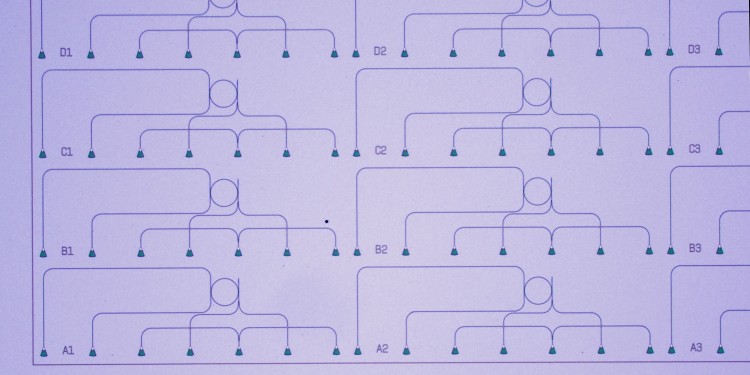
Münster University physicists working on developing a computer modelled on a brain
Faster computers with a higher performance: collaborating with researchers from Belgium, France, the UK and Switzerland, Prof. Wolfram Pernice from the Institute of Physics at the University of Münster is working on developing intelligently networked computer technology which functions in a similar way to a brain. The project, set to run for four years, is receiving four million euros of funding from the European Commission. Kathrin Nolte spoke to Pernice, a nanophysicist, about this new research being undertaken, and about artificial brains and prospects for the future.
Prof. Pernice, what distinguishes the technology you’re aiming to develop from conventional computers?
We’re trying to solve a particular problem that today’s computers have, one that is rooted in their architecture. In most computers, and in line with the Von Neumann principle, the processor is separate from the storage facility. If something needs to be computed, data have to be shifted back and forth. The process is relatively slow and uses up energy. This is why the clock rate in computers – in other words, the speed at which data are processed – has hardly increased in the last ten years. Instead, several processors are connected with one another to build so-called multicore systems. In contrast to this, computing and data storage in the brain occur in the same place, by means of neurons. These are very highly networked, which is helpful for solving certain problems. The brain is brilliant, for example, at recognizing images or patterns. For a normal computer, on the other hand, this is difficult because the data always have to be compared with one another. In our project what we’re aiming at is to develop so-called neuromorphic computer architectures which are modelled on the human brain and can merge processor and data storage into one entity.
To develop this new technology you need, among other things, artificial nerve cells and synapses – in other words, "switching points" between the nerve cells. Will the computer of the future be an artificial brain?
The comparison is a bit far-fetched because the components don’t look like a human brain. But as far as the way they function is concerned, there are similarities, and there are things we can copy. Certainly, not all computers will function in this way in future. But the new computer architecture is good at recognizing certain patterns in large data quantities. What you could do, for example, is evaluate images of human tissue. Our hardware could be used to automatically identify cancer cells, without any medical staff having to look at the images.
Taking a look into the future, will users benefit from the project in their everyday lives?
In the field of nanophysics, we carry out basic research. By our standards, this project is very much applications-oriented. Partners in industry are among those we are implementing it with. This means that things could head in a commercial direction and, ultimately, give rise to a product for everyday users too. And we have completed some of the preliminary work. We’ve been collaborating for a long time now with the University of Oxford – which is also one of our partners – in the field of optical data storage. We’re producing chips with so-called phase-change materials. By using optical circuits instead of electrical ones, data can be transferred much faster – at the speed of light. Moreover, there are no broadband limitations.
There are countless science fiction films in which intelligent machines developed by humans emancipate themselves and take over the world. Are you concerned that the product of your research could take on a life of its own?
Our research is on the hardware – in other words, on the structure by means of which something is computed. The hardware itself is not intelligent. Other things are needed for that, such as software which can independently learn and optimize itself. A chip itself is actually only as big as a thumbnail, but what surrounds it is a laboratory with lasers, detectors and fibre optics. That’s all pretty big and not designed for everyday users. In the foreseeable future, something like that will not shrink to the size of a human brain. If, however, it should happen one day, there would be attractive possibilities of symbiosis with intelligent machines, hopefully extending in a worthwhile way the abilities that human beings have.
Background details

